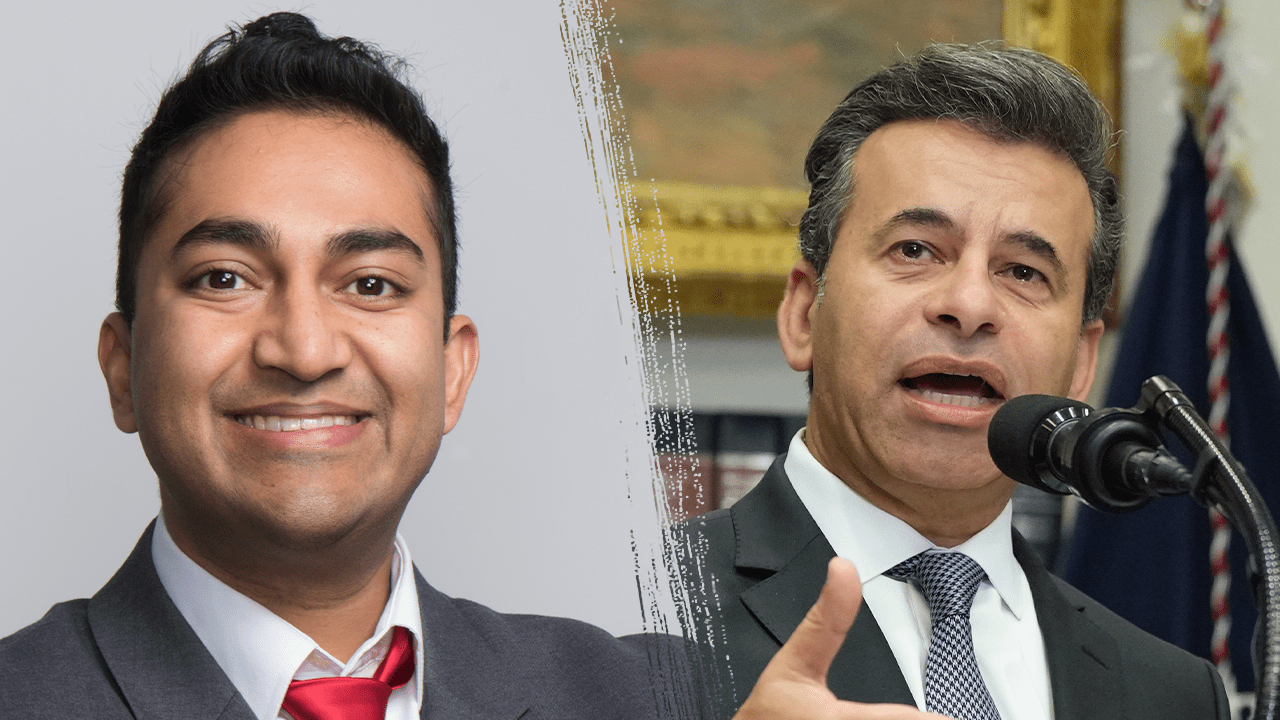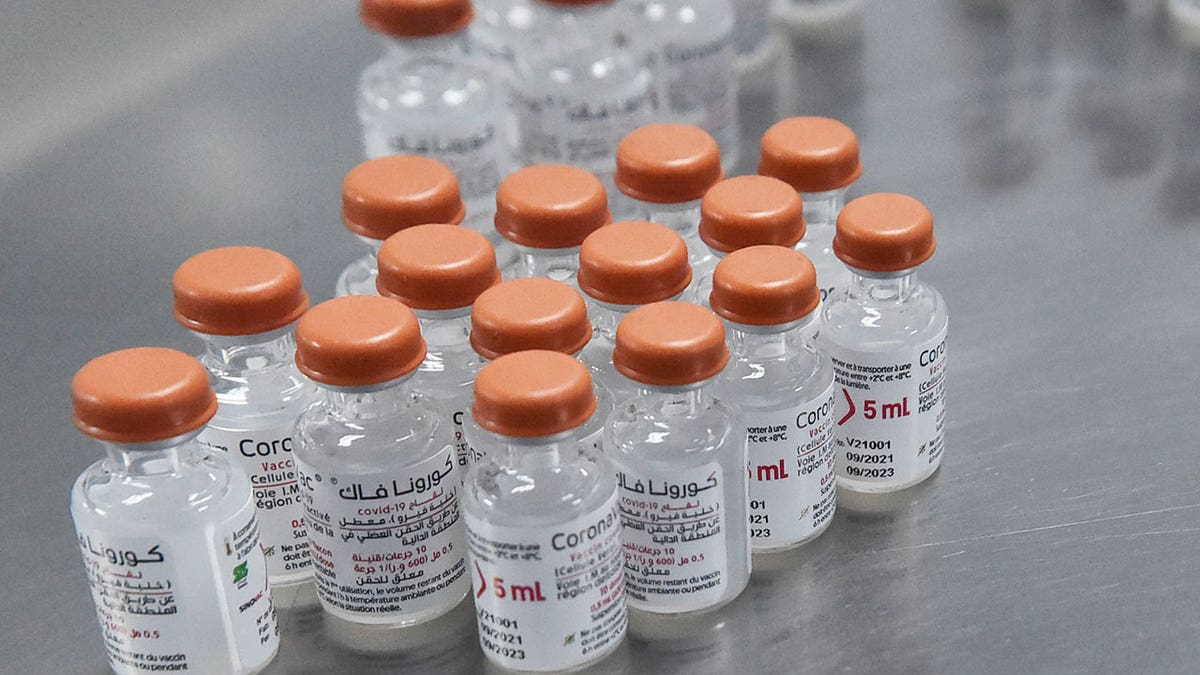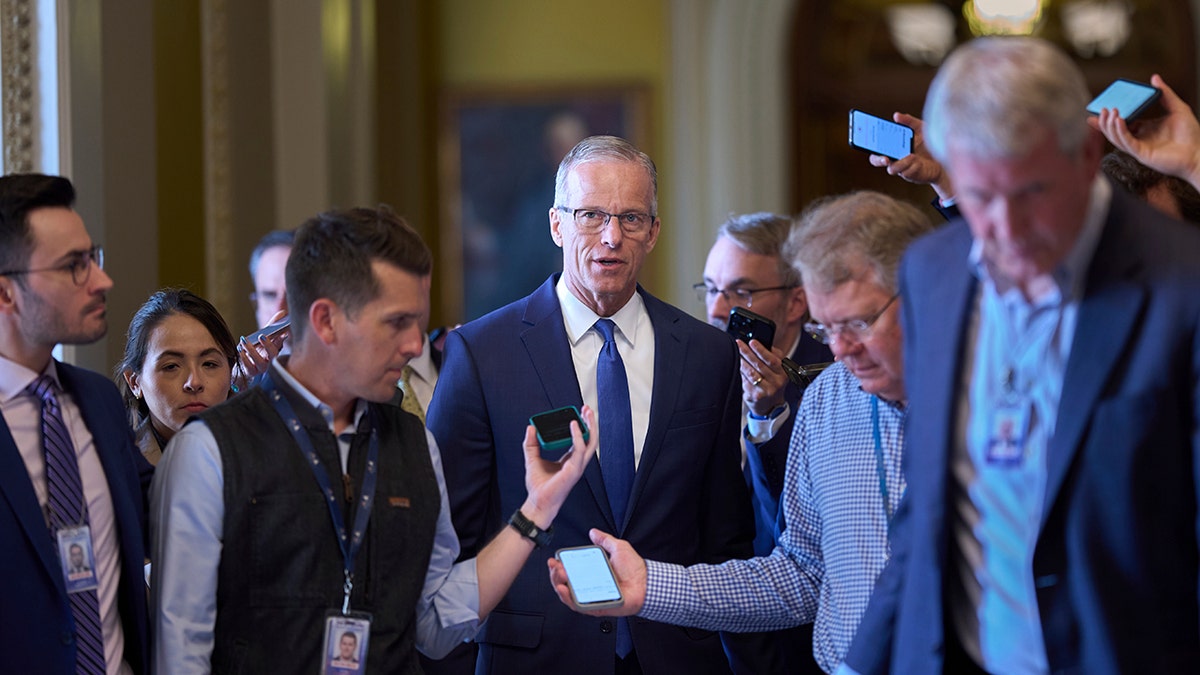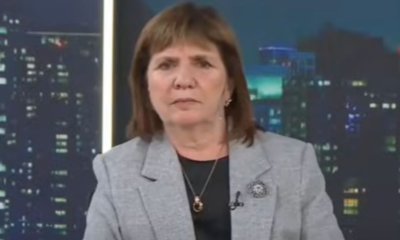INTERNACIONAL
Trump FDA overhauls COVID-19 vaccine approval to focus on older populations, high-risk individuals

The Food and Drug Administration is shifting its annual COVID-19 vaccine approval policies to focus on Americans older than age 65 and other «high-risk» individuals, while increasing the standard of evidence to approve COVID vaccines for low-risk individuals.
«The FDA will approve vaccines for high-risk persons and, at the same time, demand robust, gold-standard data on persons at low risk,» FDA’s Center for Biologics Evaluation and Research chief, Vinay Prasad, and FDA Commissioner Martin Makary, wrote in the New England Journal of Medicine Tuesday. «These clinical trials will inform future directions for the FDA, but more important, they will provide information that is desperately craved by health care providers and the American people.»
Americans over the age of 65 and those considered at high-risk of contracting the virus will be able to receive an annual COVID-19 vaccine this fall, the essay outlined, while vaccines for low-risk Americans will likely face stricter scientific analysis before they are made available to the public. The FDA estimated that about «100 million to 200 million Americans» older than age 65 or considered at high-risk will still have access to vaccines.
Prasad and Makary said in their essay that the U.S. will move away from a «one-size-fits-all» paradigm that promoted COVID-19 vaccines for the vast majority of Americans, stretching from children to the elderly. The shift, they said, will bring America’s policies more in line with guidelines in European nations.
RFK JR’S HHS TO END ROUTINE COVID VACCINE GUIDANCE FOR CHILDREN, PREGNANT WOMEN: REPORT
Dr. Vinay Prasad and Dr. Marty Makary said in their essay that the U.S. will move away from a «one-size-fits-all» paradigm that promoted COVID-19 vaccines for the vast majority of Americans. (Getty Images)
«While all other high-income nations confine vaccine recommendations to older adults (typically those older than 65 years of age), or those at high risk for severe Covid-19, the United States has adopted a one-size-fits-all regulatory framework and has granted broad marketing authorization to all Americans over the age of 6 months,» the health leaders wrote in the New England Journal.
«The U.S. policy has sometimes been justified by arguing that the American people are not sophisticated enough to understand age- and risk-based recommendations,» they wrote. «We reject this view.»
FIERY RFK JR. FLOGS WHO FOR CAVING TO CHINA ON COVID, CELEBRATING PANDEMIC ‘FAILURES’ IN STUNNING VIDEO TO ORG

President Donald Trump and Health and Human Services Secretary Robert F. Kennedy Jr. (Anna Moneymaker/Getty Images)
The FDA’s policy shift will include requiring vaccine manufacturers to gather clinical trial data to justify rolling out new COVID-19 vaccines for Americans at low risk of contracting the virus.
BEN & JERRY’S CO-FOUNDER ARRESTED PROTESTING SENATE HEARING: ‘RFK KILLS PEOPLE WITH HATE’
Prasad and Makary held a roundtable discussion on the framework outlined in their medical essay Tuesday afternoon to walk Americans through the policy shift. Prasad explained that health officials under the Trump administration are taking into account that Americans have balked at the FDA’s guidance under the Biden administration to receive multiple booster shots, while other Americans demand access to the vaccines.
«We have to admit to ourselves that America is deeply divided on the policy issue of repeat COVID 19 vaccine doses or boosters,» he said. «There are some Americans out there who are worried that the FDA has not fully documented and interrogated the safety harms of these products, and they are categorically opposed to these products. There are also some Americans we also have to recognize, who are desperate for additional protection, and they demand these products. But the truth is that most doctors and most of the public are entirely uncertain, and that is reflected in low vaccine uptake of these products.»

Americans’ trust in the scientific community has cratered since the COVID-19 pandemic, Dr. Vinay Prasad and Dr. Marty Makary noted. (AP Photo, File)
The pair added during the roundtable that Americans’ trust in the scientific community has cratered since the pandemic.
«Survey after survey shows trust in institutions like the FDA and scientists in general, it’s rock bottom,» Prasad said during the roundtable. «I mean, we have lower trust than Congress, and that’s saying something, you know. And we need to rebuild that trust. And part of rebuilding that trust is having conversations like this, writing articles like we’ve done in the New England Journal, and having a common-sense evidence-based framework for rebuilding that trust.»
CLICK HERE TO GET THE FOX NEWS APP
The pair cited in their article in the New England Journal that «public trust in vaccination in general has declined,» including for «vital immunization programs such as that for measles–mumps–rubella (MMR) vaccination, which has been clearly established as safe and highly effective.»
Coronavirus,Vaccine,Health,Senior Health,Donald Trump
INTERNACIONAL
Fox News Politics Newsletter: El Salvador’s Bukele Mocks Hunter Biden Threat

NEWYou can now listen to Fox News articles!
Welcome to the Fox News Politics newsletter, with the latest updates on the Trump administration, Capitol Hill and more Fox News politics content. Here’s what’s happening…
– Trump pulls US out of UN agency over its backing of ‘woke’ social causes
– ‘Not going away’: Inside the Epstein drama that’s thrown House GOP into chaos
– Louisville agrees to halt sanctuary policy after DOJ threatens lawsuit
Salvadoran President Hits Back at Hunter Biden’s Invasion Threat: What is He ‘Sniffing’?
Salvadoran President Nayib Bukele responded late Monday to having his country under the threat of invasion from a future «President Hunter Biden.»
Bukele, who has emerged as a top ally of President Donald Trump and a partner in the U.S. leader’s mass deportation operations targeting illegal immigrants, appeared to laugh off the threat.
«Is Hunter Biden sniffing powdered milk?» Bukele replied on X, where he shared a snippet of Biden’s interview with podcaster Andrew Callaghan… READ MORE.
Salvadoran President Nayib Bukele laughs off Hunter Biden’s suggestion of a future U.S. invasion. (Getty; Reuters)
Migrant Crime
HOUSTON HORROR: Chilling video allegedly shows illegal migrant dragging screaming sex trafficking victim back to captivity

Surveillance video allegedly shows illegal immigrant Jose Perdoma dragging Chinese woman back into Houston trailer
LEFTIST BACKGROUND: Anti-ICE attackers revealed to have extensive history of radical protest activities
FORENSIC TWIST: Illinois coroner releases new details about woman found dead on illegal immigrant’s property
World Stage
THREAT COUNTDOWN: EU defense chief warns of ‘most dangerous moment’ — coordinated Russian-Chinese aggression by 2027
FREE ON MASSIVE BOND: Chinese citizen admits stealing US trade secrets for next-generation national security tech
DIPLOMATIC DIVIDEND: ‘Trump has changed the game’: NATO enters brave new era under pressure from US, Russia
‘SENSELESS LOSS’: American man from Oklahoma ‘brutally executed’ by Syrian-backed jihadis
MATTER OF PRIDE: Iran will not give up enrichment, top official confirms in exclusive Fox News interview

Iran Foreign Minister Abbas Araghchi at a joint presser with Russian counterpart in Moscow, April 2025. (Getty Images)
RED LINE: China prevents dozens of Americans from leaving under shadow ‘exit ban’
Hunter Biden
AIRING OF GRIEVANCES: 5 bizarre moments from the former first son’s meltdown
Capitol Hill
DEPORTATION DIVIDE: House Republicans warn anti-ICE rhetoric from Democrats is driving violent attacks on agents
BIG, BEAUTIFUL FIGHT: Scoop: Democrats launch billboards outside hospitals to target Trump for ‘Gutting Rural Health Care’
IN THE CROSSHAIRS: Trump blasts Massie as ‘the worst Republican Congressman’ and says he’s seeking a challenger to support
DEMS IN DISARRAY: AOC slams progressive critics for ‘lying’ about her Iron Dome stance in defense bill fight
BUDGET BATTLE LINES: Dems seek retaliation over GOP cuts as Thune calls for ‘cooperation’ on funding vote

Sen. John Thune speaks on Trump’s tax bill at the Capitol, June 2025 — AP (AP Photo/J. Scott Applewhite)
FAITH UNDER FIRE: GOP lawmakers advocate for US condemnation of persecution against Christians in Muslim-majority nations
CIVIL WAR: ‘Not going away’: Inside the Epstein drama that’s thrown House GOP into chaos
FLIP FLOP: Trump endorses GOP senator years after asserting ‘I will never endorse this jerk again’
Across America
MAYOR BACKS DOWN: Louisville agrees to halt sanctuary policy after DOJ threatens lawsuit
CAMPUS CRACKDOWN: Columbia University disciplines 70 students more than a year after violent library takeover
JUDGMENT DAY: Newsom to decide on Menendez brothers’ parole by Labor Day weekend
TAKE TWO: Cuomo tones down Trump rhetoric after stunning loss to Mamdani in NYC mayor primary

As former Gov. Andrew Cuomo, right, resets for a general-election rematch against Zohran Mamdani, left, his rhetoric has been decidedly less likely to reference President Donald Trump. (Getty Images)
‘DISGUSTING’: NYC councilwoman warns Mamdani victory will drive away key voting bloc: ‘Afraid to live here’
VOTED OUT: Judges vote against extending Alina Habba’s term as US attorney in New Jersey
Get the latest updates on the Trump administration and Congress, exclusive interviews and more on FoxNews.com.
INTERNACIONAL
Fiscal estadounidense busca averiguar qué más sabe Ghislaine Maxwell del caso Epstein: se reunirán pronto

El fiscal general adjunto de los Estados Unidos, Todd Blanche, reveló este martes que inició los contactos para reunirse en la cárcel con la expareja del financista Jeffrey Epstein, Ghislaine Maxwell, para averiguar «¿Qué sabe?» en concreto en la trama de delitos sexuales que los llevaron a prisión y que salpicó a empresarios, nobles y dirigentes políticos de ese país y Europa.
El anuncio del segundo en ranking jerárquico del Departamento de Justicia obtuvo el visto bueno del presidente Donald Trump que consideró «apropiada» la medida, en medio del revuelo que sigue generando el caso.
Justice demands courage. For the first time, the Department of Justice is reaching out to Ghislaine Maxwell to ask: what do you know? At @AGPamBondi’s direction, I’ve contacted her counsel. I intend to meet with her soon. No one is above the law—and no lead is off-limits. https://t.co/3IZh9viI7i
— Todd Blanche (@DAGToddBlanche) July 22, 2025
«Nadie está por encima de la ley y ninguna pista está descartada», advirtió Blanche en el posteo que publicó este martes en redes sociales que generó sorpresa cuando informó que «por primera vez, el Departamento de Justicia contacta a Ghislaine Maxwell para preguntarle: ¿Qué sabe?».
Maxwell que tiene ciudadanía británica, francesa y estadounidense cumple una condena a 20 años de prisión como aparente cómplice y captadora en la trama de delitos de abuso sexuales con menores de edad por la cual también había sido sentenciado Epstein, quien terminó muerto en la cárcel en 2019 «por suicidio», según las autoridades.
«Por orden de (la fiscal general) Pam Bondi, he contactado a su abogado. Tengo la intención de reunirme con ella pronto», afirmó el adjunto.
La fiscal Bondi, cuyo accionar siempre es destacado por Trump, fue cuestionada recientemente por no cumplir su promesa de publicar toda la evidencia de los delitos que se le adjudican a Epstein, luego de que en un encuentro en la Casa Blanca se repartieran a influencers copias de la investigación en las que se esperaba encontrar un listado de celebridades afines al magnate que nunca apareció.
Blanche remarcó que tras hablar con el abogado de Maxwell tenía «la intención de reunirme con ella pronto. Nadie está por encima de la ley y ninguna pista está descartada«.
Statement from @DAGToddBlanche:
This Department of Justice does not shy away from uncomfortable truths, nor from the responsibility to pursue justice wherever the facts may lead. The joint statement by @TheJusticeDept and @FBI of July 6 remains as accurate today as it was when… pic.twitter.com/uosIvk1818
— U.S. Department of Justice (@TheJusticeDept) July 22, 2025
Además, en otro posteo en X, señaló que si Maxwell «tiene información sobre cualquier persona que haya cometido delitos contra víctimas, el FBI y el Departamento de Justicia escucharán lo que ella tenga que decir«.
En agosto de 2024, Blanche como abogado había defendido a Donald Trump ante los estados de Nueva York por las acusaciones que le había hecho una joven estrella porno por un supuesto contrato irregular con el magnate que llegó dos veces a la Presidencia.
El abogado de Maxwell, David Oscar Markus, confirmó que el contacto oficial y, según la cadena CNN, afirmó que su clienta «siempre testificará con veracidad».
Poco después del anuncio, Trump afirmó en una rueda de prensa en la Casa Blanca que no tenía conocimiento de la decisión de Blanche pero que le parece una acción «apropiada».
Y, volvió a cargar contra las críticas que recibe por el manejo del caso como la «continuación de la cacería de brujas» a la que dice ser sujeto.
El manejo del caso Epstein ha creado una inesperada crisis entre los miembros del movimiento Make America Great Again (MAGA) del presidente Trump, después de que el FBI y el Departamento de Justicia concluyeran en una investigación que el financiero no contaba con una «lista de clientes» famosos para chantajear y confirmaran su muerte por suicidio en 2019.
Los simpatizantes del presidente manifestaron su insatisfacción con la Administración del republicano, que había prometido en campaña publicar dicha lista, una supuesta agenda de cómplices de Epstein que incluiría a celebridades y políticos influyentes que ha sido por años el centro de numerosas teorías de conspiración de la ultraderecha.
Trump, quien ha defendido «el gran trabajo» de Bondi, ordenó al Departamento de Justicia divulgar todas las pruebas «creíbles» del caso para aplacar a su base.
«Este DOJ no rehuye las verdades incómodas, ni la responsabilidad de buscar justicia dondequiera que los hechos lo requieran», agregó este martes Blanche, quien defendió la validez de los hallazgos del DOJ y el FBI.
Y, remarcó que «en la reciente revisión exhaustiva de los archivos del FBI en el caso Epstein, no se descubrió ninguna prueba que permitiera iniciar una investigación contra terceros no acusados«.
La polémica sobre el caso fue avivada la semana pasada con la publicación por The Wall Street Journal de una supuesta carta de contenido «obsceno» enviada por Trump a Epstein durante los años en los que eran amigos, algo que el presidente ha negado categóricamente diciendo la nota es «falsa».
SMB con información de EFE
Estados Unidos,Jeffrey Epstein,Donald Trump,Últimas Noticias
INTERNACIONAL
Ante la corrupción en el Ejército, el régimen de Xi Jinping recurre a la propaganda para contener la descomposición interna

El Ejército Popular de Liberación (EPL) de China intensificó esta semana su campaña ideológica interna con la publicación de un editorial que insta a los cuadros políticos militares a “decir la verdad” y “enfrentar los problemas de frente”. El mensaje, difundido en el Diario del EPL, órgano oficial de las Fuerzas Armadas, forma parte de una estrategia propagandística que busca contener el desgaste institucional tras los múltiples escándalos de corrupción que han sacudido a la cúpula militar.
“El ocultamiento de los problemas o el maquillaje de la realidad reflejan un carácter partidario impuro y motivaciones egoístas”, advierte el texto, publicado sin firma individual, pero atribuido a un comentarista oficial del diario. El artículo exige a los funcionarios políticos del Ejército —encargados de aplicar la línea ideológica del Partido Comunista— actuar con “moralidad e integridad” en un contexto marcado por purgas internas, ausencia de información y la caída de varios altos mandos por corrupción.
Los cuadros, sostiene el editorial, deben ser “luchadores, no caballeros”, una formulación que refuerza la visión autoritaria del régimen sobre el papel del liderazgo militar. Se invoca además la figura de Mao Zedong y otros líderes revolucionarios para legitimar la necesidad de “predicar con el ejemplo” en medio de lo que el propio texto califica como “riesgos superpuestos” para el Ejército.
La publicación llega apenas dos días después de que la Comisión Militar Central (CMC), máximo órgano castrense de China, emitiera nuevas directrices para reconstruir la credibilidad de las Fuerzas Armadas. El documento, también difundido por el Diario del EPL, establece “líneas rojas políticas” y limitaciones en las interacciones sociales de los oficiales, con el objetivo explícito de frenar redes de favores y tráfico de influencias.

Aunque no se mencionan nombres, ambos textos aparecen en medio del silencio oficial sobre el paradero y la situación legal de figuras como el general He Weidong, uno de los oficiales de más alto rango que ha desaparecido del espacio público sin explicación. Tampoco se ha informado sobre las causas reales que llevaron a la caída de los dos últimos ministros de Defensa, reemplazados en medio de investigaciones internas cuya existencia no ha sido formalmente reconocida por las autoridades.
La falta de transparencia, sumada a la sustitución del debido proceso por campañas ideológicas, ha sido una constante en la gestión del Ejército bajo el liderazgo de Xi Jinping. En lugar de una rendición de cuentas abierta, el régimen ha optado por reforzar el control político mediante discursos de moral partidaria, publicaciones anónimas y referencias simbólicas a la historia del Partido.
La coincidencia entre el tono del editorial y las nuevas normas disciplinarias revela un patrón habitual en el sistema de propaganda del Partido Comunista Chino: el uso de medios oficiales para ejercer presión indirecta, consolidar el poder de la jerarquía política y silenciar cualquier forma de disidencia dentro del aparato militar.

Lejos de ser un gesto de reforma, el llamado a la “honradez” y a la “verdad” se produce en un entorno donde la verdad institucional se decide desde arriba, sin mecanismos independientes ni espacio para el escrutinio público. En ese contexto, las apelaciones a la lealtad, la disciplina y la “pureza ideológica” funcionan como herramientas de blindaje para un régimen que prioriza la estabilidad política frente a la rendición de cuentas.
(Con información de EFE)

 POLITICA3 días ago
POLITICA3 días agoExpulsada del Gobierno, Victoria Villarruel empieza a tomar distancia, pero no tiene proyecto político para este año

 POLITICA2 días ago
POLITICA2 días agoLa CGT evalúa adelantar a octubre el recambio de sus autoridades y define una movilización contra Milei

 POLITICA1 día ago
POLITICA1 día ago🗳️ El chamuyo de las elecciones en la Provincia: se postulan, pero no a asumen



































